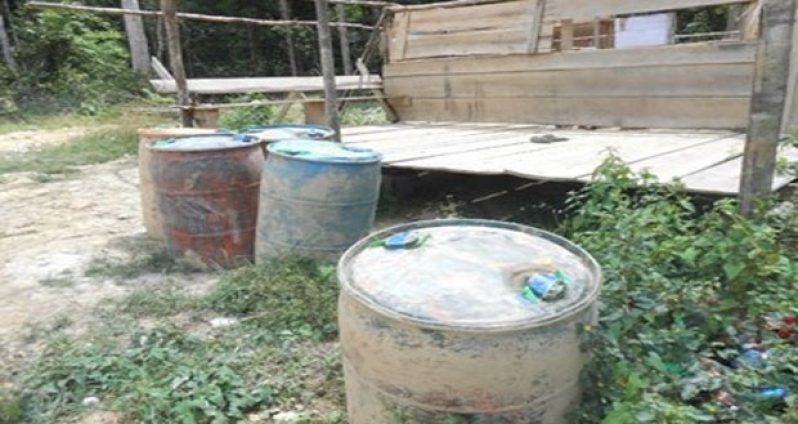GUYANA Energy Agency (GEA) Chief Executive Officer (CEO), Dr Mahender Sharma said while currently there is no discernable correlation between the drop in fuel prices and fuel smuggling, the situation is being closely monitoring.Globally oil prices have plummeted sharply, falling from US$106 per barrel in June 2014 to around US$53 per barrel on Sunday. The downward spiral has resulted in Government slashing prices for gasoline and dieseline by 30 per cent respectively and kerosene by 42 per cent.
This was also followed by the lowering of electricity rates by 10 per cent as announced by President Donald Ramotar at the recent commissioning of the US$26M power station at Vreed-en-Hoop.
It was felt that the sharp decline in prices on the world market in a way would have created a dent in local smuggling, a problem the authorities have been battling and making some headway.
In 2014, some 3,381 gallons of diesel and 434 gallons of gasoline were seized, and according to Dr Sharma, acknowledging the volatility of fuel prices and using an average price, the approximate value of the fuel seized is about $3.5 million.
This was an improvement from the previous year. In 2013, some 1,647 gallons of diesel and 1,284 gallons of gasoline were seized, which together worth some $2.6 million.
Speaking with the Guyana Chronicle, the GEA head said operations undertaken or planned to be undertaken by the Energy Agency, for security, strategic and other reasons, are not disclosed to the public, but he noted that there is a robust programme in place.
He said several joint operations, intelligence gathering operations, capacity-building programmes and installation of a new base in Region 7 (Cuyuni-Mazaruni) are planned for 2015 to strengthen the agency’s ability to competently and effectively discharge its statutory mandate.
ANTI-SMUGGLING TASK FORCE
Fuel smuggling is being tackled by the Task Force on Fuel Smuggling and Contraband, which is chaired by Home Affairs Minister Clement Rohee. The Task Force provides a framework to foster cooperation and coordination among key enforcement entities.
These agencies are the Guyana Police Force, the Guyana Revenue Authority, the Guyana Defence Force and the Customs Anti-Narcotics Unit.
GRA renders assistance to the GEA in relation to the disposal of illegal fuel, and Dr Sharma told this publication that the coordination efforts of the Task Force have positively influenced the efforts to combat fuel smuggling.
“The GEA is tasked with the responsibility of prosecuting persons found in possession of, selling, purchasing, transporting, storing or otherwise dealing with illegal petroleum, that is, petroleum that does not contain the required concentration of marker or contains duty-free marker and is found being utilised by one who is not authorised by the Guyana Revenue Authority to have duty and tax-free petroleum and petroleum products,” he said.
PROSECUTIONS
The CEO at the GEA reported that in 2014, 38 incidents of the discovery of illegal fuel were recorded. For the said year, 17 charges were instituted in the Magistrates’ Court while in other matters, compensation was accepted in accordance with the GEA Act and no charges instituted, based on advice received from the Office of the Director of Public Prosecutions.
But he said prosecution of alleged perpetrators is not a straightforward task.
“As with any other criminal offence, prosecutions instituted and conducted by the GEA are faced with various constraints and hindrances. The focus has always been and continues to be on closing any legal loopholes discovered whether by statutory intervention, intensified training of staff or the acquisition of resources necessary to ensure the successful prosecution of offenders,” Dr Sharma said.
Last year, some 2,200 sites were visited, with those sites of concern being visited more frequently. This accounted for a total of 12,970 site visits for the year, Dr Sharma said.
He pointed out that 51 or two per cent of the sites sampled at least once were found with significant dilution (defined as more than 50 per cent) in at least one tank.
PROGRESSIVE DECLINE
From 2006 to 2014, the percentage of sites found with significant dilution in at least one tank has progressively decreased from 34 per cent in 2006 to two per cent in 2014.
“With more sites visited, the data suggests that more sites are dealing in legal fuel,” the GEA CEO said.
Analysing progress from the inception of the Fuel Marking Programme in 2003, test results for samples collected from 2003 to 2014 show that during the assessment phase (2003), 12 per cent of the samples analysed were found to be significantly diluted.
This decreased to six per cent in the post-assessment phase and throughout 2004. From 2005 to 2007, the testing strategy, Dr Sharma said, was focused on areas with a high incidence of illegal activity.
“For this three-year period, the percentage of significantly diluted samples fluctuated from nine per cent to 15 per cent and then to eight per cent. It is believed that this fluctuation was a direct result of the strategy used for sampling and would have a direct relationship with the number of samples analysed and the focus on areas with a high incidence of smuggling. The year 2008 can be characterised as a mixture of focused, planned and random sampling. The percentage of samples found with significant dilution was maintained at three per cent in 2009. The year 2010 set another record with significant dilution reported as two per cent, indicative of sustained reduction in the percentage of significantly diluted samples analysed,” Dr Sharma said.
He pointed out that in 2011 and again in 2012, significant levels of adulteration (defined as more than 50 per cent) were detected in only one per cent of the samples analysed. With the analysis of 64 per cent more samples in 2013, one per cent of the samples analysed was found to be significantly diluted. While an increased number of samples were analysed in 2014, levels of adulteration remained below two per cent, the GEA head noted.
(By Tajeram Mohabir )




.png)









